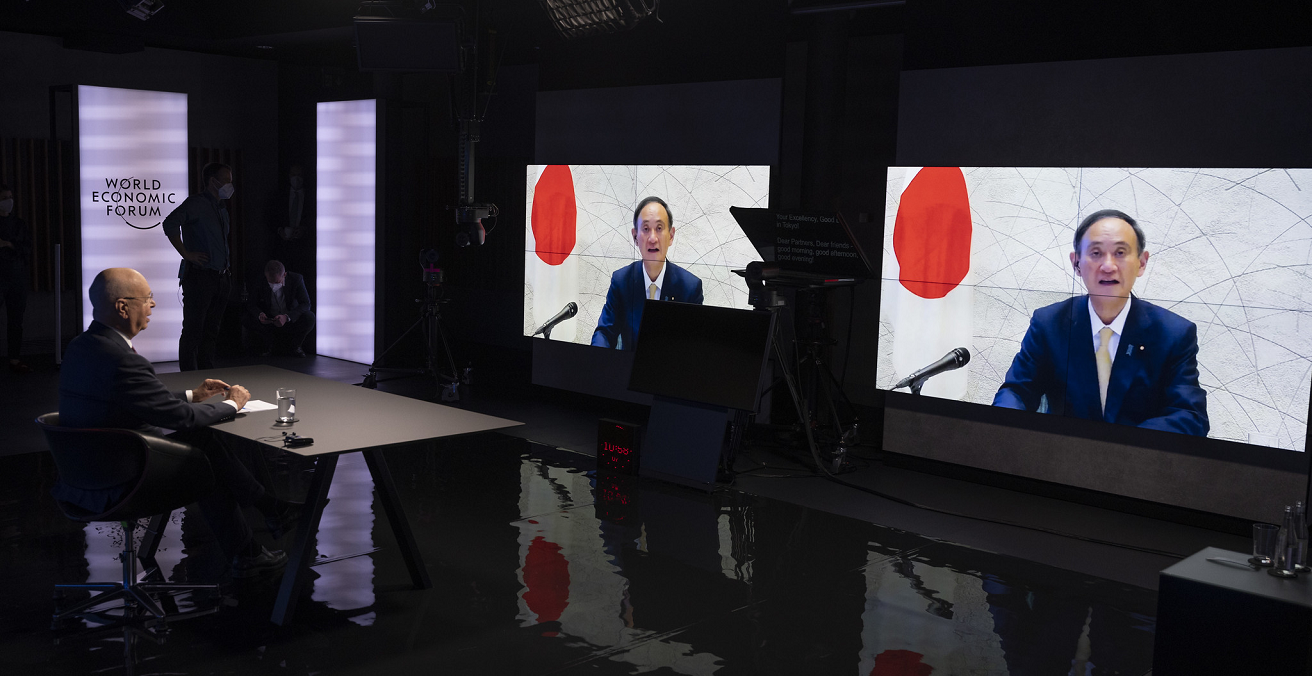RCEP is Concluded and the Middle Powers Carry the Torch

The conclusion of RCEP does not highlight the vital role Japan played as an interlocutor for the negotiating members. Japan’s geo-economic strategy will continue to shape the future of regional trade and investment architecture.
The Regional Comprehensive Economic Partnership (RCEP) was concluded and signed among ten ASEAN members and five (Australia, China, Japan, South Korea and New Zealand) regional partners on 15 November 2020. This partnership, recognised as the largest mega free trade agreement (FTA) in the world, came as a result of eight-year-long negotiations with ASEAN in the driver seat. The agreement, which controversially excludes the United States, has also raised concerns regarding China’s geopolitical leverage over the United States and China’s dominance in determining the regional trade agenda.
The tug-of-war over the regional economic order continues. Facing the slowing global economy due to the pandemic and the threat of de-coupling from the United States, China has shown its resolve to engage in rule- and standard-setting competition in regional trade and investment. At the November 2020 APEC summit, President Xi Jinping announced that China was “favourably considering” joining the Comprehensive and Progressive Agreement for Trans-Pacific Partnership (CPTPP). The United States, whose turbulent presidential transition has just concluded, is currently out of the loop in the Indo-Pacific economic rule-making dynamics. Despite strong calls for the US to come back to the negotiating table, it is likely and possibly more desirable for the Biden administration to take care of domestic problems and divisions first before returning to this agenda.
In the meantime, like-minded governments of regional players like Japan and Australia are expected to hold the fort of the international liberal economic order. Leadership by middle powers is entirely possible, as demonstrated by Japan’s recent actions.
What does Japan’s leadership mean? Where does it come from?
Japan has proactively engaged with mega-FTAs recently. The RCEP is not the only mega-FTA that Japan concluded in the last several years. The success of the CPTPP is also largely attributed to Japanese leadership. When the agreement was signed by its eleven members on 8 March 2019, the Wall Street Journal hailed that “Japan, the original trade villain, now casts itself as a hero.” Japan has a third mega-FTA under its belt with the European Union, which came into effect in February 2019. Overcoming a very tense bilateral relationship with China, and in the face of the precarious Trump administration over the last four years, Japanese geo-economic strategy has been quite effective in setting economic rules and standards in the Indo-Pacific. How has Japan managed to achieve these lofty feats? As I discuss extensively in my recent book, both the regional economic backdrop and the country’s own economic transformation have contributed to make Japan’s active economic leadership in the region come to life.
First, rising geo-economic tension in the region has led Japan to utilise its pivotal position as the clash of economic ideology between the US and China has heightened over the last ten years. This pivotal position does not mean that Japan can shift its weight around between its long-time ally, the United States, and its largest trading partner and neighbour, China. It means, rather, that with its relatively large economic heft, Japan has strong influence over the types of rules and institutions adopted for the region.
Second, Japan’s economic transformation over the last several decades illustrates a path for many Asian economies following Japan’s trajectory in the economic catch-up process. Japan’s economic shift from a neo-mercantilist “developmental state” to a liberal state provides a useful example to the Asian members such as China, Vietnam, or Malaysia. The examples are often positive, inspiring aspiration for these countries’ futures and suggesting concrete steps to take. They can also be useful from the position of learning from Japan’s failures, so that subsequent national developments can avoid severe trade conflicts or slow domestic structural reforms recognised in Japan’s lost decades.
Finally, having been a trade villain in the past has enabled Japan to bridge the two economic ideologies prevalent in the region: both the one held by advanced economics around economic neoliberalism, and the one held by the late-comers in the form of economic developmentalism, including protectionism and state-led capitalism. As economies in Asia undergo dynamic transformation from low-income, labour-intensive manufacturers to middle-to-high-income producers of high-tech goods, the rules they would need to govern the regional economy change. Therefore, for instance, as these economies start to capitalise on the extensive supply chains covering the region with their investment, high-standard rules of intellectual property rights and e-commerce become important.
The Japanese negotiators of the RCEP are aware of how much time such economic transformation will take for many economies in the region. Hence, this agreement needed to accommodate diverse and flexible paths. The RCEP is also a living agreement that can grow with the regional members, where conditions can be revisited every five years to modify and update the articles. As a reflection of Japan’s effective role in regional rule-making, Japan has been voted as the most trusted power in the region by the ASEAN elite.
China is not going away
Despite China’s very confident appearance and often intimidating actions, exemplified in its current trade war with Australia, China’s economy still has catch-up to do, and Chinese businesses need the global market to continue to thrive. With slowing of its economic growth, China is currently at a crossroads, faced with a choice whether to continue its current development path or move seriously to a reform path. If China chooses the latter, the country will have a lot of obstacles ahead, particularly when it comes to reforming its politically formidable state-owned enterprises. For that, aspiring to make its economy espouse high-standard and rules of agreements such as (CP)TPP is useful so that the reform-minded Chinese leaders can tilt its domestic political power balance in favour of restructuring.
Now that the Chinese economy has expanded globally, the world has to live with its large presence into the foreseeable future. An economically powerful China is going to stay in the region for the decades to come, and it is vital for the Asia-Pacific, with high stakes in the prosperity of the global economy, to put in place robust economic rules to secure its prosperous and interdependent future. Collaborating among the regional powers, binding China in the high-standard path, as Japan has been working to do for some time, is an ultimate course of action.
Saori N. Katada is Professor of Political Science and International Relations Department at University of Southern California. Her newest book Japan’s New Regional Reality: Geoeconomic Strategy in the Asia-Pacific was published by Columbia University Press in July 2020.
This article is published under a Creative Commons License and may be republished with attribution.





